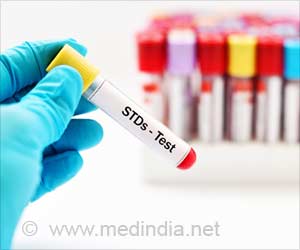Repeated testing and treatment of chlamydia in urban teenage girls does not reduce the prevalence of the infection, revealed a long-term study by Indiana University
Repeated testing and treatment of chlamydia in urban teenage girls does not reduce the prevalence of the infection, revealed a long-term study by Indiana University School of Medicine researchers.
The researchers found that despite being screened every three months and treated when infected, the proportion of infected girls did not change over the course of the study.On entering the study, 10.9 percent of the young women were infected.
After 18 months of participation, 10.6 percent were infected; 10.4 percent were infected at the four-year mark.
Eighty-four percent of repeated infections were reinfections.
In spite of being so highly motivated that they kept diaries of their sexual encounters and interacted at least quarterly with the study staff, some of the young women had unprotected sex with either an untreated partner or a new partner and subsequent infection occurred.
The researchers determined that 13 percent of repeated infections were due to failure of antibiotics to cure an earlier infection; considering all infections, antibiotic treatment was 92.1 percent effective.
Advertisement
The researchers obtained a biological sample from as many sex partners of the study participants as possible to determine if the boys were chlamydia infected.
Advertisement
Chlamydia is the most common bacterial sexually transmitted infection and is associated with an increased risk of pelvic inflammatory disease, ectopic pregnancy, tubal infertility, and increased susceptibility to human immunodeficiency virus infection.
Chlamydia is more common in sexually active teens than in any other age group.
The study is published in the latest issue of the Journal of Infectious Diseases.
Source-ANI
SRM











